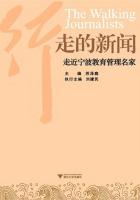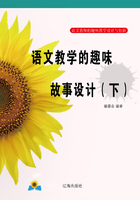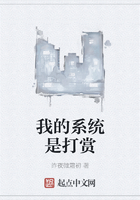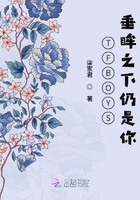11.Driscoll,Catherine.Girls:Feminine Adolescence in Popular Culture and Cultural Theory.New York:Columbia University Press,2002.
12.Lasch,Christopher.“For Shame.”New Republic,207,no.2(1992)pp.29-35.
13.Scheff,Thomas J..“Shame and Related Emotions:An Overview.”American Behavioral Scientist,38,no.8(1995),pp.1053-60.
14.Rosenblatt,Louise M..Literature as Exploration.New York:MLA,1995.
15.Eichenbaum,Luise,and Orbach,Susie.Understanding Women:A Feminist Psychoanalytic Approach.New York:Basic,1983.
16.Applebee,Arthur N..The Child's Concept of Story.Chicago:University of Chicago Press,1978.
17.Ballaster Ros,Beetham Margaret,Frazer Elizabeth,and Hebron Sandra.“A Critical Analysis of Women's Magazines.”In Turning It on,A Reader in Women and Media,edited by H.Baehr and A.Gray,pp.87-96.New York:Arnold,1996.
18.Cherland,Meredith Rogers.Private Practices:Girls Reading Fiction and Constructing Identity.Bristol,Pa.:Taylor&;Francis,1994.
19.Hubler,Angela E..“Can Anne Shirley Help Revive Ophelia?Listening to Girl Readers.”In Delinquents and Debutantes:Twentieth Century American Girls'Cultures,edited by Sherrie A.Inness,pp.266-84.New York:New York University Press,1998.
Religion on Time:Personal Spiritual Quests and Religious Institutions on the Cover of a Popular News Magazine
《时代》封面上的宗教:个人精神上的追求与一个受欢迎的新闻期刊封面上的宗教制度
David W.Scott
摘要:本研究表明《时代》封面上所描述的宗教世界与宗教组织内部所创造的宗教世界存在很大不同?《时代》信奉私人的而不是公共的宗教行为,对宗教制度持怀疑态度而且还往往让会员选举出宗教符号,作为促进娱乐?艺术和大众科学的手段?基督教占据着封页,在四月(复活节)和十二月(圣诞节)的封面上基督教的象征成为尤为突出的重点?
Abstract
This paper suggests that the world of religion portrayed on Time magazine covers differs dramatically from those created within the walls of religious institutions.Time embraces private over public religious practice,is skeptical of institutions,and often co-opts religious symbols as a means of promoting entertainment,art,and popular science.Christianity dominates cover pages,with special emphasis on Christian symbols in April(Easter)and December(Christmas).
Today,religion resides as much in the hands of individuals as it does in traditional institutions.Through the Internet,televangelism,recorded music,religious radio,and religious novels,citizens increasingly engage in a form of spirituality that is independent and nondenominational.Roof(1999)terms it a“religious marketplace,”and Hoover(2001)calls it the religion of“personal autonomy.”While many traditional denominations continue to thrive,sociologists of religion have noted this simultaneous shift from the public to the private sphere for many years now(Bellah,1970;Parsons,1960).Various media may accelerate this situation,given that information previously obtained directly from clergy can now be accessed through the Internet,magazines,television,and other sources.This study seeks to uncover examples of how news media are depicting this shift from institutional to private religion.Because the covers of Time magazine reflect societal trends,they may prove useful in better conceptualizing the evolution of public and private religious practice.
There are two additional reasons why Time magazine covers should be studied.First,news magazines,as cultural artifacts,may reveal public perceptions about historical events.Spiker(2003),for example,analyzes public sentiments about September 11 using magazine covers,Pompper and Feeney(2002)look at covers of Life in describing cultural conflicts about the Gulf War,Johnson and Christ(1995)evaluate how women are portrayed on the covers of news magazines.As Johnson(2002)puts it,“...covers provide benchmarks to history.”(p.3)Furthermore,magazine covers represent marketing tools intended to better sell magazines from the news racks(McManus,1994;Pompper&;Feeny,2002;Spiker 2003).While some might draw a distinction between analyzing magazine covers as marketing tools rather than as cultural artifacts,Sumner(2002)prefers that researchers view magazine covers as marketing tools rather than cultural artifacts.However,his study limits the definition of“cultural artifact”to suggest that as such,magazine covers should reflect and influence societal practices.In this paper we define cultural artifacts consistently with the Stuart Hall model,which instead surmises that cultural artifacts are human-created texts and objects that,when mass produced,can reflect either cultural practices or“ideals.”Hence,true to the“marketing concept,”a good cover would,in theory,if not in practice,reflect societal norms or expectations(given that the marketing model would appeal to consumers'desires).we find the two are not necessarily mutually exclusive.Cover art selected for its marketing potential would likely appeal to both consumer wants and would be strategically unwise if it veered to far from cultural norms or biases.Hence,as discovered in Sumner's(2002)analysis of Life covers,the editorial failure to recognize consumer expectations corresponded with reduced circulation figures.Despite growing interest in magazines as cultural artifacts,magazine covers are understudied(Johnson,2002;Gerlach,1987).This is especially true of those covers addressing religious themes.This lacuna of research reflects the larger problem,as noted by Carey(2001,p.1):“Religion is perhaps the most neglected topic in communications.”Consequently,how magazines portray the changing nature of the sacred and secular is a question yet to be addressed in the fields of mass communication as well as the sociology of religion.















